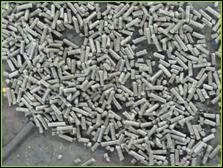An Overview of Available Pellet Mill Bags
Having set up a pellet plant, before setting into production of pellets, one may need to acquire the right pellet mill bags for holding and packaging of the milled pellets. This is required since cases of customers requesting pellets be packed into shipping containers is not very common and this type of packaging is also not applicable to customers whose pellet consumption rate is less than a tone per day. Furthermore, once production starts, there will be need to have an efficient way of storing the pellets to avoid it piling up at the output.
Presently, most pellet producers usually pack their pellets into 15kg bags and 50 kg bags. However, the manufacturer may order a custom sized bag to hold his products, but in that case, the custom bag should be anywhere between 15 to 50kg’s for the ordinary pellet packaging machine to handle it without modification. Any packaging beyond 50 kg’s will require a specialized packaging machine which may be ordered from the packaging plant manufacturers.
In order to store pellet equipment, the packaging should allow moisture to escape. This is because if moisture gets trapped, it can lead to formation of fungus such as mildew which will make the quality of the pellet to deteriorate thus fetching poor prices. Presently, many manufactures package their products in polyethylene bags or straw sacks, but a few are moving towards use of paper bags due to restrictions imposed on polyethylene by various governments and also the rising cost of oil a raw product from which polyethylene is based on.
The use of Polyethylene pellet mill bags as explained above is still in most attractive packaging solution due to its resistance to the elements of nature such as moisture. However, they are mostly used in packaging pellets between 15kg’s to 30kg’s. They are made in such a way that they allow moisture to escape via the seams which is located at the top of the bag hence it doesn’t trap moisture.
Alternatively, pellets may be packed in sacks especially when the quantity is above 30kg’s with the most common quantity being in 50kg sacks. However, when pellets are stored in sacks, it is important to store them in a damp proof warehouse else the quality of peat may get degraded. Use of sacks will require one to have sack sewing equipment near the packaging unit.
Besides sacks and polyethylene, pellets can also be packed into paper bags. These bags have an advantage over both polyethylene based sacks and bags by the virtue of being environmental friendly. Paper pellet mill bags is composed of several layers of paper and thus can hold unto 50kg’s of pellets in quantity.
One challenge that faces packaging pellets into both polyethylene bags and polyethylene based sacks is temperature. Polyethylene is very sensitive to temperature and if it is made to hold hot pellets, its stability will be compromised and also the hot pellets will reshape the looks the bag and also affect the thickness of the bag creating areas which are thinner than others hence making it easy for the bag being torn. In order to solve this, pellets need to be cooled before being packed. Such cooling solutions such as pellet mill polyethylene coolers can be fitted to the pellet mill to ensure that the pellets have shed the heat that they garnered during compaction hence making it easy to package. Furthermore, cooling may also be necessary for paper based pellet mill bags as heat also degrades the strength of the packaging slightly but the harm is reversible.



0 条评论:
发表评论
订阅 博文评论 [Atom]
<< 主页